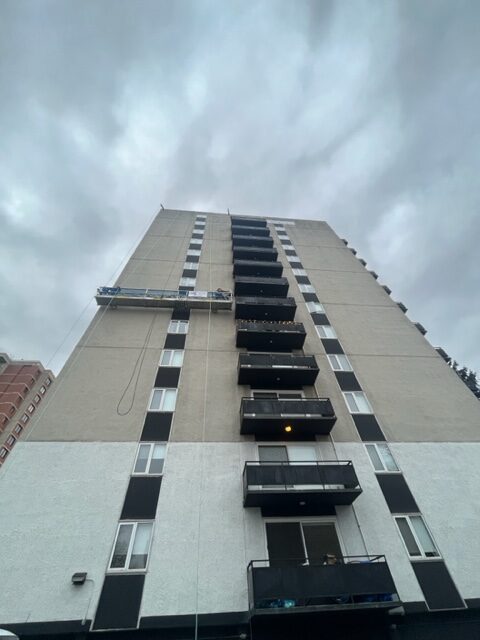Commercial caulking is an essential maintenance task for condo and apartment buildings. Proper caulking helps to seal gaps, joints, and cracks, preventing water intrusion, air leaks, and energy loss. This guide will provide you with an overview of commercial caulking and offer some tips for condo building boards and apartment building managers.

Commercial Caulking Tips
Properly Maintaining A Building’s Caulking & Building Envelope Improves Energy Efficiency, Building Longevity, Structural Integrity, & Property Value.
- Understanding Caulking: Caulking is a process of sealing joints and gaps using a flexible material called caulk. It comes in various types, such as silicone, latex, and polyurethane. Each type has its own properties, so it’s important to select the right caulk for the specific application.
- Identifying Problem Areas: Regular inspections are crucial to identify areas that require caulking. Look for gaps around windows, doors, vents, plumbing penetrations, and other openings. Also, check for cracks in exterior walls and foundation. These areas are prone to air leaks and water penetration.
- Selecting the Right Caulk: Consider the specific requirements of each area when choosing caulk. For outdoor applications, use caulk that is weather-resistant, UV-stable, and can withstand temperature changes. Silicone and polyurethane caulks are often suitable for exterior use. For interior applications, such as bathrooms and kitchens, consider using caulk that is mold and mildew resistant.
- Preparing the Surface: Before applying caulk, ensure that the surface is clean and free from dirt, dust, and loose debris. Use a wire brush or scraper to remove old caulk or paint. Clean the area with a mild detergent and water solution, and let it dry completely before applying new caulk.
- Applying Caulk: Cut the caulk tube nozzle at a 45-degree angle to achieve the desired bead size. Use a caulk gun to apply a consistent and even bead of caulk into the gap or joint. Apply enough caulk to fill the gap without overfilling it. Use a caulk smoothing tool or your finger dipped in soapy water to smooth and shape the caulk.
- Curing and Drying Time: Caulk requires time to cure and dry properly. Follow the manufacturer’s instructions for the specific product you’re using. Keep in mind that drying and curing times may vary based on factors such as temperature and humidity.
- Maintenance and Inspection: Regularly inspect caulked areas to ensure they remain in good condition. Check for signs of cracking, peeling, or deterioration. Promptly repair or replace damaged caulk to maintain the building’s integrity and prevent further damage.
- Hiring Professionals: For large-scale caulking projects or complex building structures, it’s advisable to hire professional caulking contractors. They have the expertise, tools, and experience to ensure proper caulking and sealing.
- Safety Precautions: Always prioritize safety when working with caulk. Use appropriate personal protective equipment (PPE), such as gloves and safety glasses. Follow the manufacturer’s instructions and any local regulations or guidelines for handling and applying caulk.
